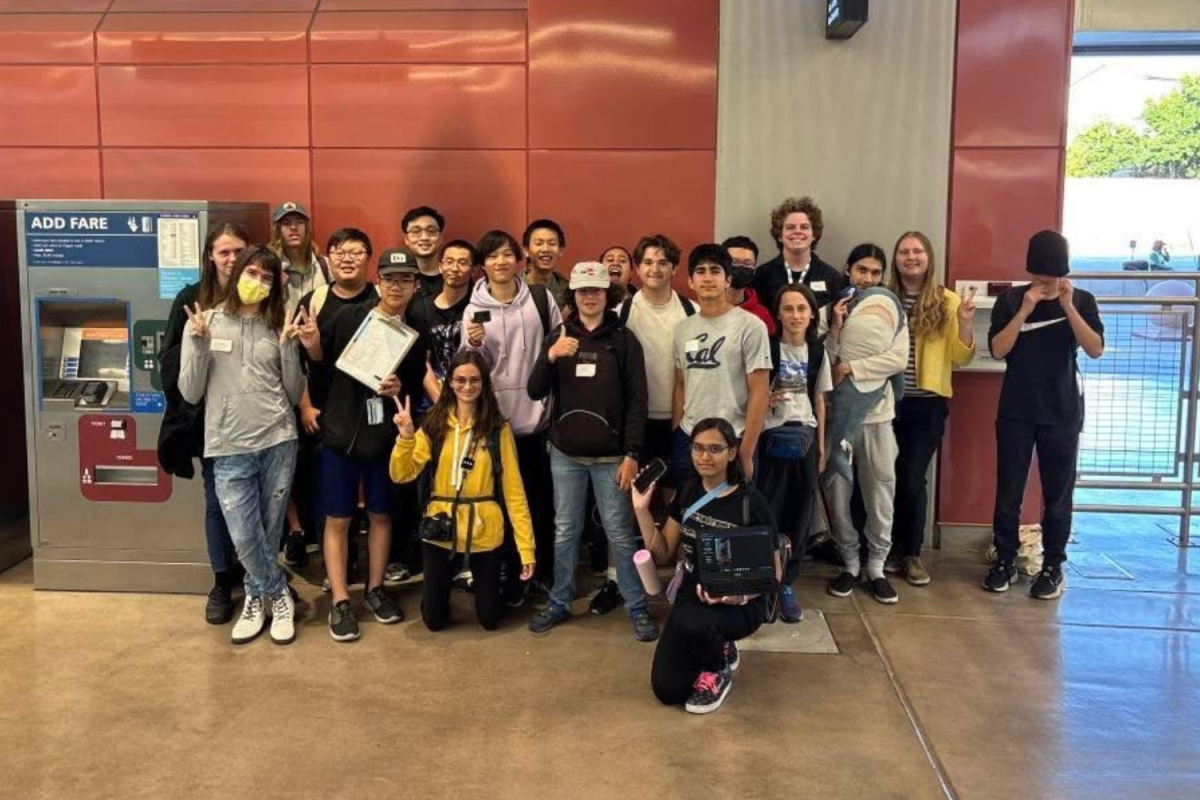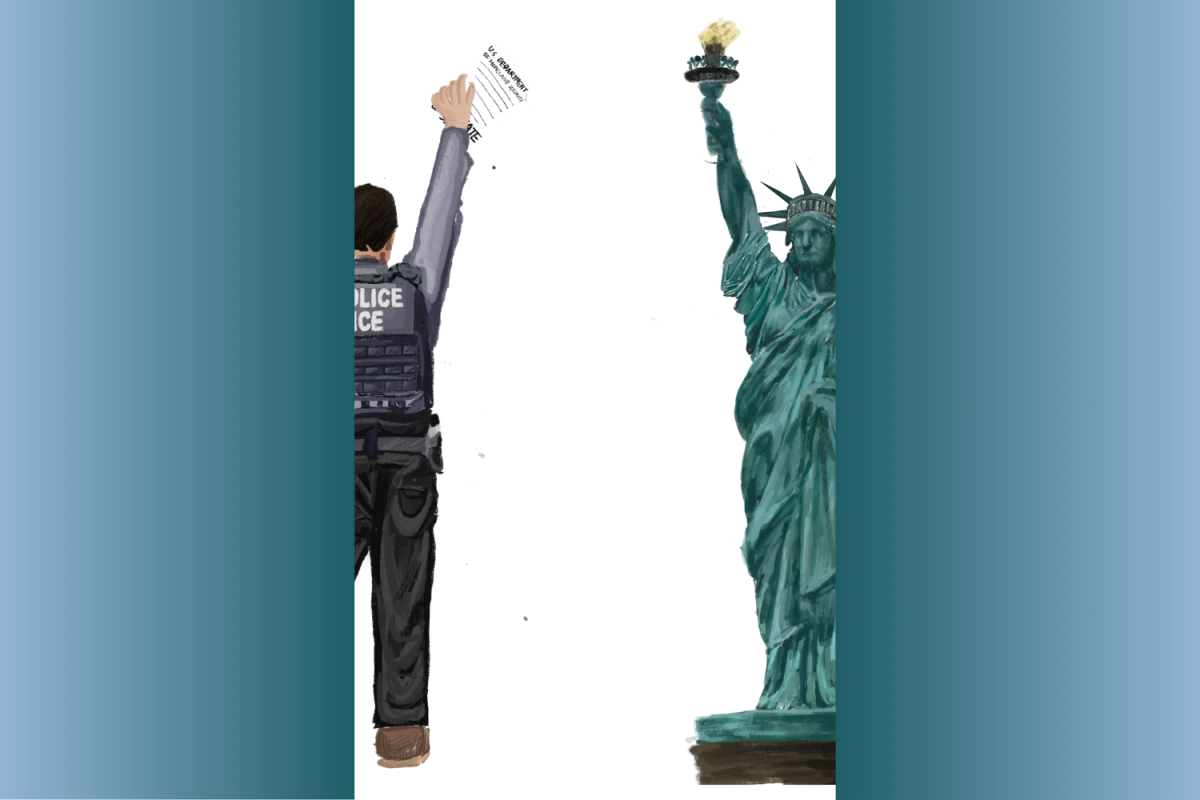President Donald Trump’s recent immigration policies have increased the presence of United States Immigration and Custom Enforcement agents in communities, inciting fear and uncertainty among local residents. The Trump Administration’s objective to detain and carry out mass deportation of undocumented individuals has prompted several unanticipated measures and made some foreigners wary of their status within the U.S.
Deportation initiatives and tightened immigration laws are nothing new to the U.S. Throughout U.S. history, various policies have led to the alienation or removal of certain demographics, often driven by economic concerns, national security threats and social pressures to maintain a specific racial makeup.
Several former presidential administrations created initiatives to strengthen immigration security by building a barrier along the U.S.-Mexico border, keeping a database of illegal immigrants’ fingerprints and allowing federal agencies to collaborate with federal authorities. In the months leading up to and after President Donald Trump’s inauguration, the Trump Administration has intensified previous policies, such as former President Bill Clinton’s Illegal Immigration Reform and Immigrant Responsibility Act of 1996, to restrict immigration. While there are similarities to previous administrations, Trump’s administration has implemented several unprecedented policies, such as enhanced border security with military personnel and increasing arrests of undocumented individuals, even those people without criminal records.
Trump’s tactics of deporting immigrants using military cargo planes is a first in U.S. history. Recently, the Trump Administration used the 1798 Alien Sedition Act to bypass laws limiting the military’s role in immigration disputes. This act has only been used three times prior to the Trump Administration in the past 200 years, the latest time being in the 1940s. In all of these previous scenarios, it was enacted in the context of Congress declaring war. Although war has not been declared, those in Trump’s base that support military involvement argue that the increase in immigration is an “invasion” of the U.S. by foreign countries. Trump’s unconventional use of this law has sparked controversy about whether it is appropriate to use the military for civil affairs within the nation.
“By putting immigrants on a military plane, Trump is essentially criminalizing them,” University of San Francisco professor of politics Marco Durazo said. “He is hyping the military might of the country — and doing it in a boneheaded way — because they are spending $800,000 to deport 100 people on military cargo planes when a regular plane with the ICE would have cost them $8,000.”
In addition, the administration has repurposed facilities such as Guantánamo Bay in Cuba for detaining migrants with alleged criminal backgrounds. The detention facility has traditionally housed serious terrorism suspects and is infamous for its torture and harsh treatment of detainees. Legal due process is not granted to the captives. The few migrants that are held in Guantánamo Bay typically reside in a separate Migrant Operations Center. Under the Trump Administration, the facility now houses many migrants with no prior criminal record besides being undocumented. The lack of guaranteed due process means that these migrants could be held there indefinitely.
Among previous administrations such as that of former President Barack Obama, most deportations targeted those with serious crime convictions. Even when Obama did deport new arrivals without criminal backgrounds, they were generally not settled in the U.S. Trump’s policy of deporting undocumented immigrants without regard for criminal or settlement status thus contrasts with Obama’s layout of specifically deporting criminals and new arrivals.
“The largest distinction is that Bush and Obama focused on ‘criminal aliens’ in their language,” Durazo said. “But now, Trump is trying to deport them all. They’re removing women. They’re removing children. There’s a documented instance in New York where they actually tried to deport a veteran — someone who had served in the military.”
Additionally, ICE agents have been deployed nationwide to conduct operations in schools, hospitals and churches that ICE designated sensitive locations where enforcement actions were previously avoided. A Justice Department memo issued on Feb. 5 lifted this restriction, declaring that state and local government officials, sanctuary cities and areas, such as schools and places of worship, will no longer legally be allowed to hinder the federal initiative to oust illegal immigrants. Consequences for not complying with federal ICE searches include budget cuts for institutions that heavily rely on government funding.
Restrictions on immigration similar to those established by the Trump Administration were implemented during the early and mid-1800s. With an overwhelming number of Irish migrants nationwide, nativist sentiment spread among working-class Americans, who worried about religious conflict and competition in the employment market. Similar anti-immigrant sentiment has arisen in the past few years, in light of 11.7 million undocumented immigrants in the U.S. as of July 2023.
In response to the influx of Irish immigrants in the 1800s, Massachusetts implemented laws that made it legal for Irish immigrants, regardless of age or citizenship, to be forcibly arrested and sent back to Europe without basic supplies. Deportations of the Irish immigrants were largely state-driven initiatives, contrasting with Trump’s federal crackdown on illegal immigrants. According to The Irish Times, with Trump’s focus largely on Latin American foreigners, the nativist sentiment against the Catholic Irishmen has drawn comparisons to the anti-Latino sentiment throughout the U.S. now.
Less than half a century ago, the Republican Party supported immigration reform and the legalization of undocumented immigrants. Under former President Ronald Reagan’s Immigration Reform and Control Act of 1986, employers were penalized for hiring undocumented immigrants, but previously undocumented immigrants also were given an opportunity to legalize. This effectively prevented an economic crisis that would come as a result of mass deportations, but also addressed concerns over undocumented immigrants not abiding by immigration laws.
Due to the increased pressure from ICE and the recent surge in concern from local communities, FUHSD has reviewed its policies and reaffirmed its stance to maintain a safe learning environment for all students in Resolution No. 2425-15. FUHSD’s policy for cases when ICE officers come on campus have not changed due to the Trump Administration thus far. When any visitor comes on campus, including ICE officers, they must first come to check in at the front office. They may come with one of two requests: subpoenas requesting information or judicial warrants. Before acting, the district may consult an attorney to seek the best course of action.
“Beyond the front office of a school, it is private,” FUHSD Associate Superintendent Trudy Gross said. “So when someone comes to the front office, they have to state their business and have a legitimate reason to be at school and move beyond the front office.”
As the Trump Administration continues exploring policies to restrict immigration in an attempt to protect national security and economic stability, the public warns that it could violate civil liberties and families. Regardless, conversations persist and the administration has put forth even more aggressive plans for the future, utilizing all available resources on deportations.
“Immigration is more than just a political issue,” Mountain View Academy freshman Ismael Salazar said. “It’s also a human issue. I see all the resilience and determination that drives people to seek new opportunities here in the U.S. and all the challenges they faced, from all the legal problems to having to adapt to a whole new culture.”




































































